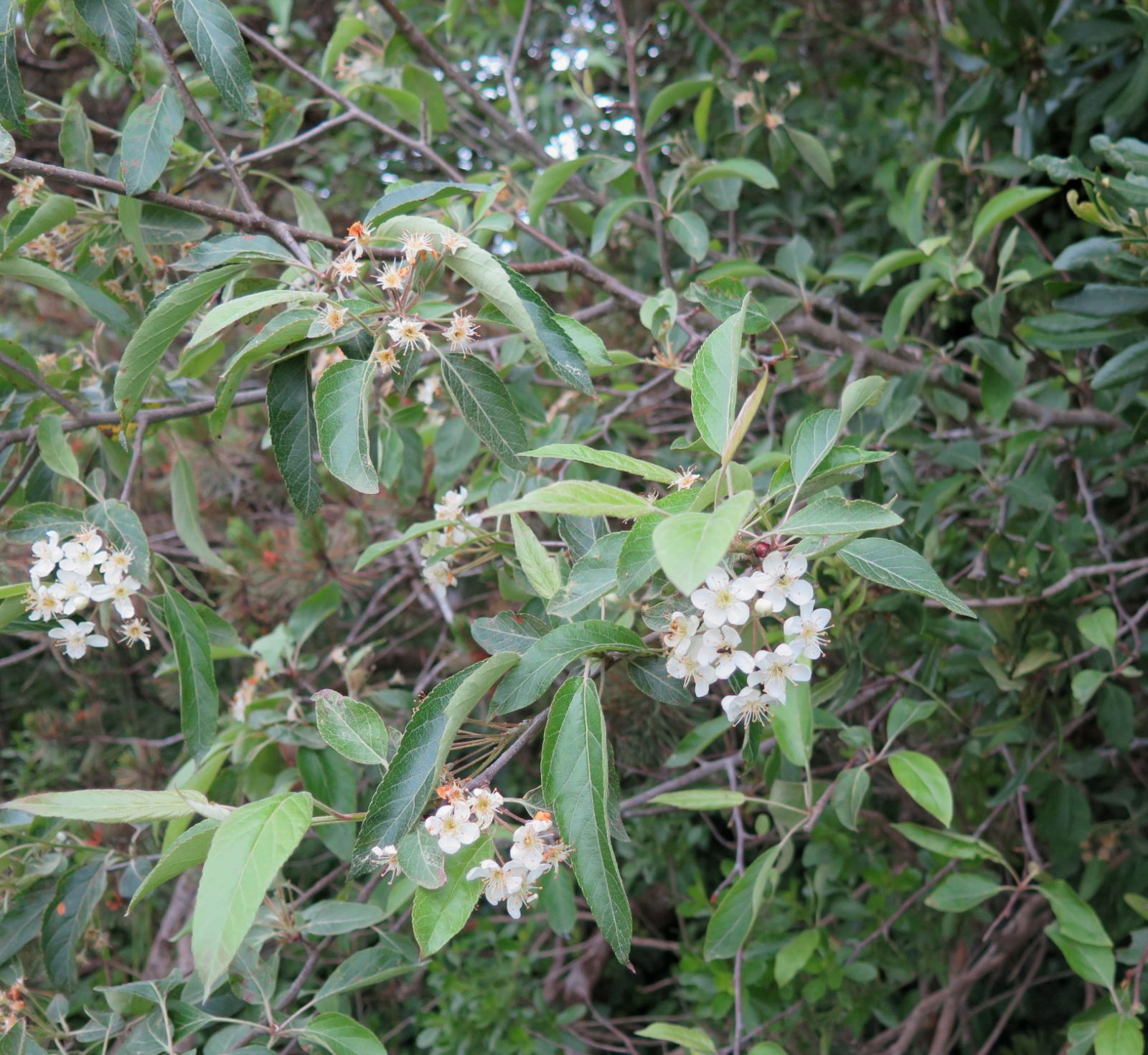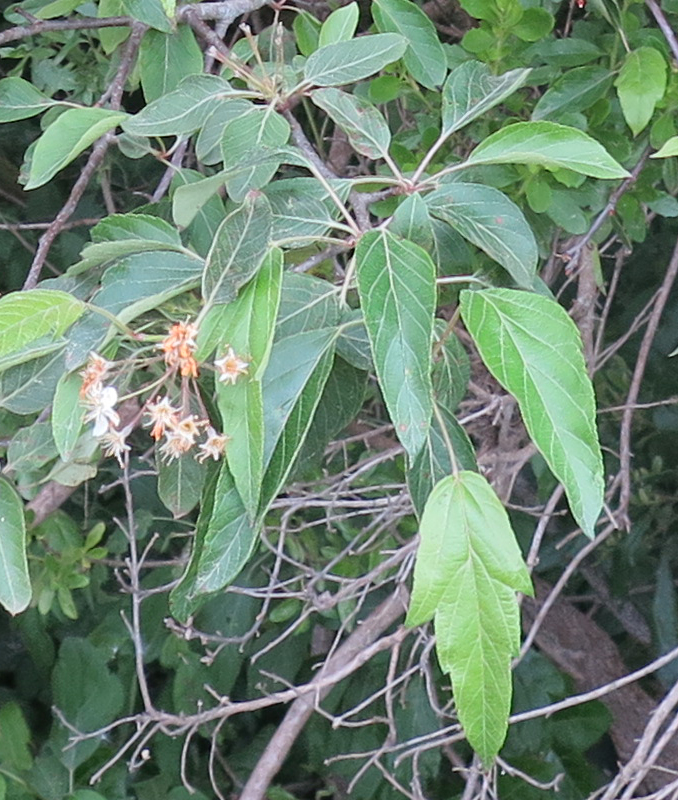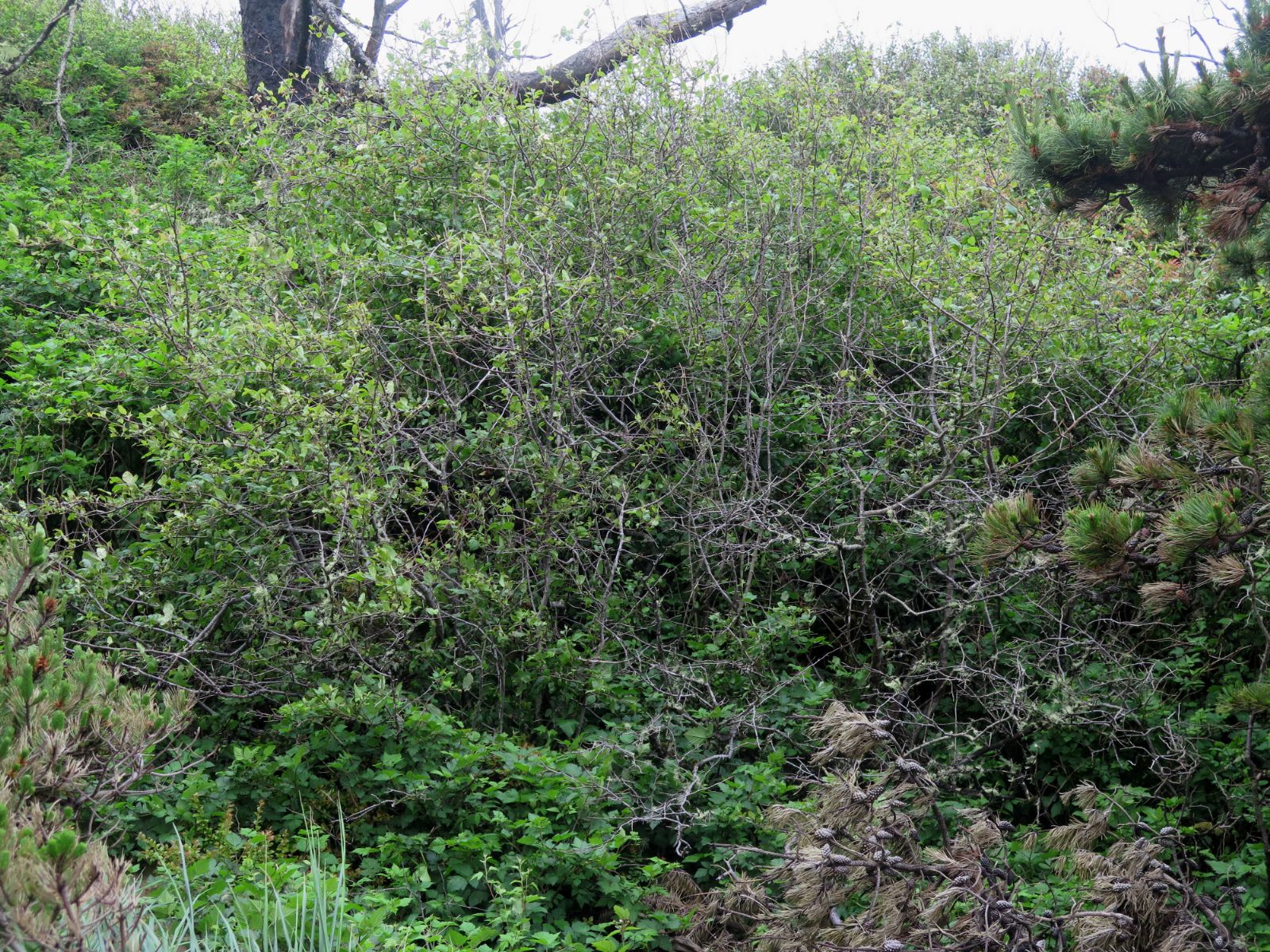Malus fusca
Sponsor
Kindly sponsored by
Francine: 'after many informative Tours and Study Days with the IDS I feel it only fitting to help and promote such a wonderful organisation'
Credits
Julian Sutton (species), Nick Dunn (cultivars) (2021)
Recommended citation
Sutton, J. & Dunn, N. (2021), 'Malus fusca' from the website Trees and Shrubs Online (treesandshrubsonline.
Genus
Common Names
- Oregon Crab
- Western Crab
- Pacific Crab
Synonyms
- Pyrus fusca Raf.
- Pyrus rivularis Douglas
- Malus rivularis (Douglas) Roem.
Other taxa in genus
- Malus × adstringens
- Malus angustifolia
- Malus × arnoldiana
- Malus asiatica
- Malus × astracanica
- Malus × atrosanguinea
- Malus baccata
- Malus bhutanica
- Malus × brevipes
- Malus chitralensis
- Malus coronaria
- Malus crescimannoi
- Malus Cultivars A-B
- Malus Cultivars C
- Malus Cultivars D-F
- Malus Cultivars G-I
- Malus Cultivars J-K
- Malus Cultivars L-M
- Malus Cultivars N-Q
- Malus Cultivars R
- Malus Cultivars S
- Malus Cultivars T-Z
- Malus dasyphylla
- Malus × dawsoniana
- Malus domestica
- Malus doumeri
- Malus florentina
- Malus × floribunda
- Malus × gloriosa
- Malus halliana
- Malus × hartwigii
- Malus × heterophylla
- Malus honanensis
- Malus hupehensis
- Malus ioensis
- Malus kansuensis
- Malus kirghisorum
- Malus komarovii
- Malus × magdeburgensis
- Malus × micromalus
- Malus × moerlandsii
- Malus montana
- Malus ombrophila
- Malus orientalis
- Malus × platycarpa
- Malus praecox
- Malus prattii
- Malus prunifolia
- Malus × purpurea
- Malus × robusta
- Malus rockii
- Malus Rootstock Cultivars
- Malus Rosybloom Cultivars
- Malus × scheideckeri
- Malus sieversii
- Malus sikkimensis
- Malus × soulardii
- Malus spectabilis
- Malus spontanea
- Malus × sublobata
- Malus sylvestris
- Malus toringo
- Malus transitoria
- Malus trilobata
- Malus tschonoskii
- Malus turkmenorum
- Malus yunnanensis
- Malus × zumi
Small tree or large shrub, 5–10(–20) m, with thorn-like spurs. Bark grey to red-brown, smooth at first, scaly and deeply fissured with age. Branchlets reddish, finely hairy at first, glabrous later. Buds red-brown, ovoid, 1.5–4 mm, scale margins ciliate. Leaf blade variously shaped, from oval to ovate to lanceolate, 3–9(–11) × 1–4 cm, 3-lobed on vigorous long shoots, glabrous beneath, finely hairy above; apex acute or acuminate, base rounded to cuneate; margin sharply toothed, sometimes doubly so; petiole 1–3 cm. Inflorescence a corymb with 6–12 flowers; peduncle absent; pedicels 1.5–4 cm, hairy. Flowers 15–20 mm diameter, April to July in the wild; sepals triangular, 3–6 mm, hoary above, rarely persisting to fruit ripeness; petals rounded, 10–15 mm, white or blushed pink; stamens about 20, 4–6 mm, anthers white before dehiscence; styles 3(–4), 6–7 mm, exceeding the stamens. Fruit yellow to purplish red, June to November in the wild, oblong to ovoid, 6–10(–13) mm diameter, stone cells abundant around the core. (Dickson 2015; Cullen et al. 2011; Bean 1981).
Distribution Canada British Columbia United States Southern Alaska to Northern California
Habitat Moist, open places, marshes, forest edges and clearings; 0–600 m, from the Cascades west, often coastal.
USDA Hardiness Zone 6-7
RHS Hardiness Rating H5
Conservation status Least concern (LC)
The Oregon Crab is an anomaly. Its general appearance is quite unlike the other North American species; unlike them its sepals are rarely persistent, its fruits are elongated, and its natural range on the northern Pacific seaboard is far to the west of the others (Dickson 2015). Most taxonomists have looked to the East Asian species for its relatives, in particular M. kansuensis and allies (Robinson et al. 2001; Juniper & Mabberley 2019). While molecular studies have generally confirmed that it is not intimately related to the M. coronaria complex, no consistent picture of its affinities has emerged (e.g. Nikiforova et al. 2013; Duan et al. 2017). It is ecologically unusual in being a wetland plant with a degree of salt tolerance (Dickson 2015). Further, it is slow-growing and long-lived for an apple, reaching 100–150 years of age (Arno & Hammerly 1977).
This tree was known to both Archibald Menzies and David Douglas, and to European botanical explorers of the Pacific Northwest in the late 18th and early 19th centuries (Hooker 1840). First named (as a Pyrus) by the free-thinking polymath and American immigrant Constantine Rafinesque-Schmaltz in 1830, the specific epithet from the Latin fuscus (dark or swarthy) might refer to the dark bark.
Ornamentally, one could argue that this is just another crab apple. However, its wetland origin and salt tolerance mean that it is sometimes recommended for ‘difficult’, seasonally waterlogged sites (Portland Nursery 2020). Some individuals have very fine red or orange autumn colour; ‘someone should propagate a clone that demonstrates consistently superior fall color’ notes Jacobson (1996). The fruits are usually considered very sour, although Bean (1981), perhaps with a hardened palette, considers that they have an ‘agreeable sub-acid taste’. They can be used for jelly, dried to make crab apple ‘raisins’ (Native Foods Nursery 2020), and were eaten and preserved in various ways by indigenous peoples throughout its range, who also used the hard wood for tools such as seal spears, digging sticks and timber-splitting wedges (Moerman 2020; Arno & Hammerly 1977).
Despite being native to a cool, maritime climate and being introduced to Britain by Douglas as early as the 1830s (Bean 1981; Jacobson 1996), M. fusca seems never to have been common in European gardens. Records from collections scattered across Britain include larger, older trees at RBG Edinburgh (1934 accession, 9 m × 150 cm in 2015) and at Thorp Perrow Arboretum, Yorkshire (12 m × 184 cm in 2019 – The Tree Register 2020). Elsewhere in continental Europe there are wild origin specimens at Gothenburg Botanic Garden, Sweden, and Meise Botanic Garden, Belgium, dating from 1958 and 1980 respectively (Gothenburg Botanical Garden 2020, Meise Botanic Garden 2020). There are several younger tress, all of wild provenance, at Belmonte Arboretum, Wageningen, Netherlands (Belmonte Arboretum 2020). At the Arboretum Mustila in southern Finland it has proved hardy since 2003, remaining shrubby and under 3 m (Arboretum Mustila 2020).
In North American cultivation it remains rare, and is mainly grown on the West Coast, sometimes offered by smaller nurseries. It is in specialist collections from Vancouver, BC (University of British Columbia 2020) south to Santa Barbara Botanic Garden, CA (Lady Bird Johnson Wildflower Center 2020) with its unambiguously Mediterranean climate. There are several examples, both wild and planted, in Washington Park, Seattle. One of the latter is the American champion, an impressive tree of 14.6 m × 229 cm in 2018, with a short, stout trunk and both ascending and wide-spreading branches (Larson 2018, American Forests 2020). Away from the Pacific seaboard there are several specimens at the Morton Arboretum, IL and the Arnold Arboretum, MA (Morton Arboretum 2020, Arnold Arboretum 2020).
Where M. fusca and M. domestica meet, the hybrid M. × dawsoniana (q.v.) may arise.




